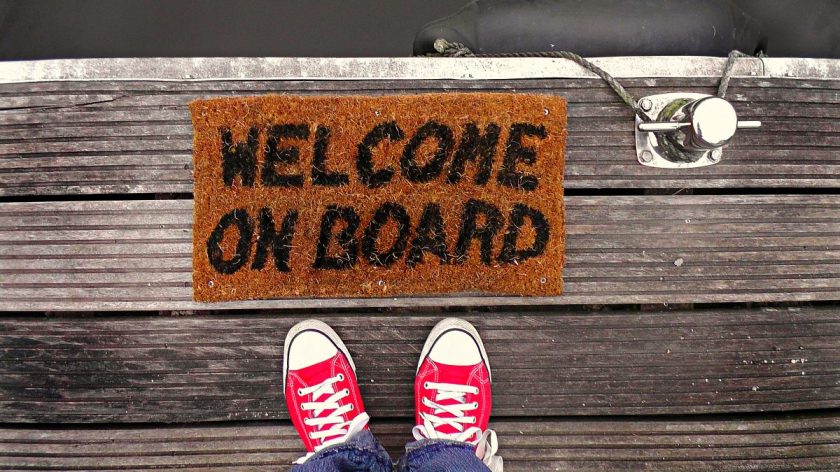
I love to travel.
While I have never traveled outside the US, I have visited most of our states, and most of our major cities. I enjoy getting away, seeing other parts of the country, and appreciating how vast and beautiful our land is. When I am on a plane, I love looking out of the window seat at the vast expanse passing underneath on a clear sunny day, or witnessing the spectacle of flying over a city at night, taking in the lit landscape like a young boy gazing at a glorious Christmas tree. As an experienced air traveler, I have learned a lot about what not to do in terms of booking, connection times, how long it might take to get through security, and things of that nature.
Over the last few years the amount of traveling I have done has reduced significantly, not because of my MS, but because the opportunities aren’t as great. The only accommodation I made because of the MS was to arrive at the airport earlier and to give myself more time between connections, because rushing though the airport to make the connecting flight is impossible. Aside from those two changes, my game plan when it came to negotiating the airport, and general attitude regarding air travel, had not changed, until today.
Subconsciously, I knew that when the symptoms slithered into my knee, it was a game changer. After all, I have documented that it is harder to walk, and that my balance is significantly worse in previous posts. I was curious how or if it would change my airport experience in the days leading up to this morning’s excursion from Connecticut to Nashville, Tennessee. In my self proclaimed state of denial and stubbornness to plow ahead and not worry about the consequences, I vowed not to change a thing regarding my airport game plan in advance of this trip. Then, my wife asked this question, although it was really more of a statement: “You’re getting wheelchair assistance this time, aren’t you?”
When I booked the flight months ago, I declined that option, perfectly content to muddle my way through security, and be the first on the plane. But she wouldn’t let it go, so I thought about it and decided, why not? But honestly, I only relented because of the two braces that span my toes to upper thigh, and the hassle they might present going through security. So screw it! If it makes getting through security easier, I could temporarily swallow my pride.
I am so glad I listened to her, for a number of different reasons.
The first thing you need to know about our airport, Bradley International, is that it is not huge. Early morning, which is when I arrived, is the worst time to be there because of all the business travelers getting out on the first flights of the day. And this morning’s crowd was no exception. In fact, it was probably the busiest I have seen it in years. Lots of people, and lots of long lines.
But when I entered the airport today, I knew something was different. Pulling the rolling suitcase behind me was infinitely harder because I had to zig zag through the mass of people, and with my balance, I don’t zig zag very well anymore. After I gingerly made my way to check my bags and drag them to the X-ray machine, I parked myself on a chair, and gratefully waited for the wheelchair attendant to arrive.
The first thing I noticed after I requested wheelchair assistance was that my boarding pass was marked TSA pre-checked, which allowed me to bypass those long lines. As we weaved our way through the throng, I was happy that I didn’t have to get caught up in that mosh pit of humanity.
Going through security was easier for a couple of reasons. The first was that even though they had to wand me, given my leg was encased in metal, I didn’t have to fret over my wallet, watch, and other items being left unattended, because my wheelchair escort grabbed them for me while the TSA agent was doing their thing. The other reason was that, in my opinion, the TSA rep was, well, nicer. He did his job quickly, and got me out of there faster than the previous times I went through the process without the wheelchair. Maybe it was my imagination, but I felt a lot of empathy.
I didn’t really need the chair to get to my gate after I was through security, but I have to admit it was nice not having to walk that distance. This was further illustrated when I got to O’Hare, and walked to my connecting gate. I wasn’t in a hurry, and I could have waited for the wheelchair to arrive, but I chose not to. The trek took a very long time and I felt something I never experienced in an airport before: vulnerability.
You see, people inside an airport are clueless. They wander around, either looking at their phones, looking for their gates, looking for something to eat, somewhere to sit, or rushing through the crowd like a running back picking a hole to run through, and they are all oblivious to who or what is in front of them, in back of them, or around them. That is not a good feeling for someone with balance issues, so I simply steered to one side of the terminal and stopped or slowed down when someone threatened to invade my orbit, using my cane to secure my space if necessary. It felt like walking through a mine field.
Fortunately, the agent at my connecting gate told me a wheelchair would be waiting for me in Nashville, so I knew I wouldn’t be tempted to hoof it on my own when I arrived. It was a good thing too because while there were nowhere near as many people as there was at O’Hare, the walk was just as long, had more inclines, and the floor was carpeted, which tends to grab my foot more.
By the way, is it me or does it seem that the airport wheelchair attendants tend to be older, or smaller of stature? While I am average concerning height and weight, I am certainly not a lightweight, and felt bad for the two that got me because they had to strain a few times to get me where I needed to do.
Another thing that was different is that getting in and out from the window seat for a bathroom break during the flight was much harder, having to grab and hold onto the head rests on the seats in front of me to stay upright. Maybe I am going to have to get aisle seats from now on. And once I got to the aisle, the journey to the bathroom felt a lot more wobbly than it ever used to, and the aisle felt narrower. My hands were always on the seats on each side of the aisle because if we hit unexpected turbulence, I know I would have fallen across someone’s lap. I never felt that way before.
Getting on and off the bus that served as the shuttle to my hotel was harder, and as we approached the Opryland Resort, the bus driver described it as 57 acres under one roof and instead of thinking that was really cool, it seemed like another obstacle to contend with.
The fact is, it has been a year since my last trip, and everything is harder. When I was at the same meeting in Vegas last year, everything was just as spread out as it is here, and there was as much if not more walking inside the facility. But the difference between this year and last, is that last year I viewed that reality with a “no problem” attitude. This year’s attitude is more like “oh shit!”
I will never get on an escalator again with luggage in tow because I have one hand on the cane, another of the luggage handle and, unfortunately, no third hand to grab onto the escalator rail. Not a smart move for someone with balance issues. Nothing bad happened, but I would be lying if I said I wasn’t nervous. Why I didn’t look for an elevator is beyond me. That won’t happen again.
Now that I am here, I am sure I will enjoy my time in Nashville, but I know there be a lot of walking and standing, and I suspect that will take more effort than it used to. Then I will have to endure the return trip home. When I reflect on this trip once I am home, I doubt it will squelch my desire to travel again, but perhaps I will have to be more selective regarding where I travel to, or when my flight departs.
The one thing that I do know is that MS has definitely invaded the ease in which I used to travel, and that with time this will become harder. Perhaps a point in time it will come where traveling will become impossible.
And that would be a very sad day.


 One of the first items most of us have to confront is how we are going to treat our condition, most of which involve drugs of some kind. The most viable options are predicated on the type of MS we have.
One of the first items most of us have to confront is how we are going to treat our condition, most of which involve drugs of some kind. The most viable options are predicated on the type of MS we have. My name is Steve, and I was unexpectedly afflicted with MS ten years ago. It came as a complete shock because nobody in my family ever had it, and no warning signs preceded the day the first symptoms appeared.
My name is Steve, and I was unexpectedly afflicted with MS ten years ago. It came as a complete shock because nobody in my family ever had it, and no warning signs preceded the day the first symptoms appeared.
You must be logged in to post a comment.